
|
Olympus E-3 Image Samples — Part 1 |

|
My other articles related to the |
|
These samples are not supposed to show off the capabilities of the E-3 (or mine as a photographer); they are rather intended to show how the camera (including the lens used) handles some predictable objects, especially those with which I am familiar from previous shooting sessions, and which I have shot before with other equipment, under similar (although not identical or controlled) conditions. With a few exceptions (clearly marked as such), I'm showing every sample as two pictures, a reduced (and re-sharpened) full frame, and a selected fragment of that frame, shown in 1:1 pixel scale without any postprocessing (just cropped and re-saved). In a few cases I'm providing a link to the original full frame as delivered by the camera, so that you can inspect it up close to your heart's desire. All these pictures were saved by the camera as JPEG files. Sawing raw images makes sense only if you are tweaking the conversion in postprocessing. When evaluating the 1:1 samples, remember that they show detail which will not be seen in a reasonably-sized print (or any print viewed from a proper distance). If you are viewing them on a typical, 96-dpi monitor, you see the detail the way it would look on a print 28.5×38" large (that's 72×96 cm, my metric friends); and such a print should be usually viewed from the distance of 120 cm (which is 47.5"). At your normal computer-viewing distance, all image flaws are therefore significantly enhanced. The Crofton Lake This is usually my test subject, as I'm shooting here from a spot twenty feet or so from my doorstep — especially important in temperatures below freezing. I can also choose the right moment and quickly check the results on a computer, re-shooting any images in case of goofed settings. For the pictures in this section, the camera was set to the: Natural Picture Mode with sharpness N-1, contrast N-1, and saturation N±0; noise filter off. White balance at 5300°K (sunny), aperture priority AE with -0.3 EV compensation, ISO 100. As often with a new camera, I was using three-frame, 1/3 EV exposure bracketing, but without a single exception, the first (nominal exposure) frame was used here, being most to my liking. Because of wide tonal range (especially at wide angle), I've used spot metering on the house with a fence, as seen in the center. JPEG compression was 1:2.7. Note also that here I was using, in addition to the new "standard" zoom (12-60 mm ZD) also the older one (14-54 mm ZD). | ||
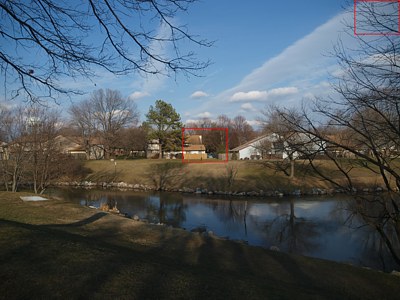
|
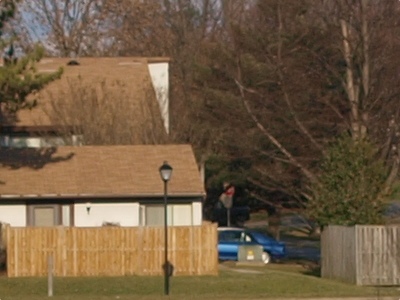
| |
| [1] 12-60 mm F/2.8-4.0 ZD at 12 mm, F/2.8 (fully open) [full frame] | ||
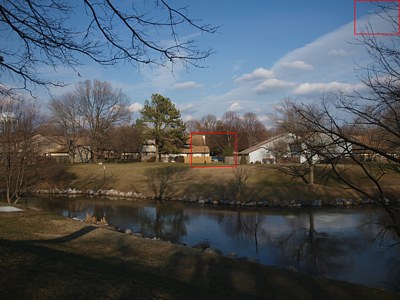
|
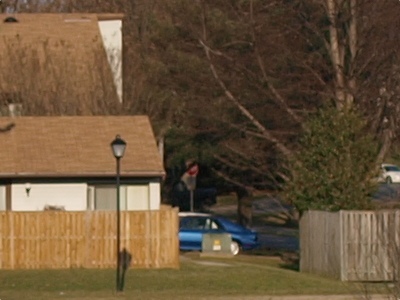
| |
| [2] 14-54 mm F/2.8-3.5 ZD at 14 mm, F/2.8 (fully open) [full frame] | ||
|
Well, first of all, the image tonality is most pleasing (wait for a minute with exploring the full frames), and the center resolution leaves nothing to be desired. These are both excellent lenses — but it was already Orwell who said "some lenses are more excellent than others", and this is the case here. A careful inspection of corners shows that; look at the 1:1 fragments shown side-by side below: | ||
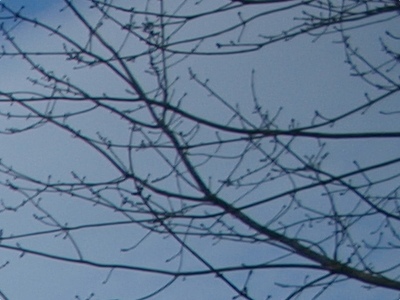
|
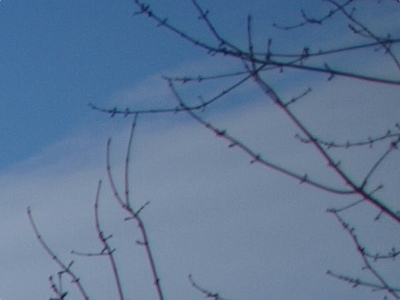
| |
| 12-60 mm ZD, a corner fragment of [1] | 14-54 mm ZD, a corner fragment of [2] | |
|
The differences, if not dramatic, seem to be clear: the 12-60 mm has a slight edge in sharpness and chromatic aberration, and that in spite of a wider angle. As the chromatic aberration effect is usually best visible on a background of white sky, I've chosen the top-right and not top-left (blue) corners. (Now feel free to see the full frames...) I wouldn't draw a conclusion like this based on a single picture, but it is supported by what I could see in about two hundred of comparative samples like these, especially at wider angles. Center very much alike, corners better in the new "standard" zoom. Now, the same comparison, but with lenses closed down to F/8. | ||
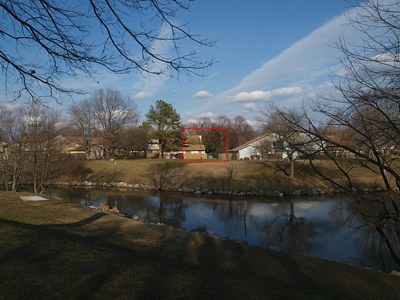
|
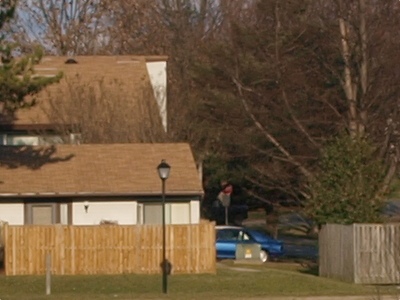
| |
| [3] 12-60 mm F/2.8-4.0 ZD at 12 mm, F/8 | ||
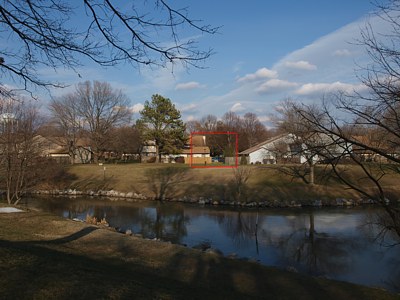
|
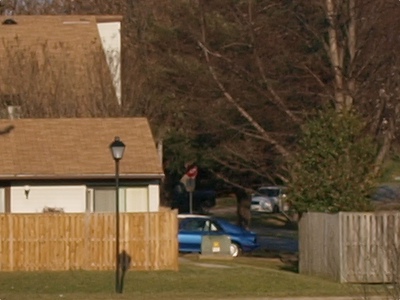
| |
| [4] 14-54 mm F/2.8-3.5 ZD at 14 mm, F/8 | ||
|
While both lenses seem to improve slightly when stepped down, I would say that the improvement is more visible for the older one. You may even get an impression that it delivers better at this aperture, but this is due to a bit more of magnification (2 mm difference in focal lengths). A small "blind" experiment with similar samples (but all shot at 14 mm) has shown that I did not have a preference for either lens — at least not near the center. In corners, the older zoom still shows (if just a tad) more of chromatic aberration. Now, let's move on to other focal lengths. Zooming in... | ||
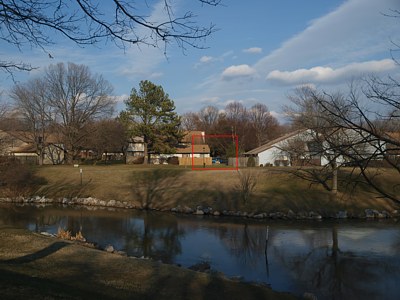
|
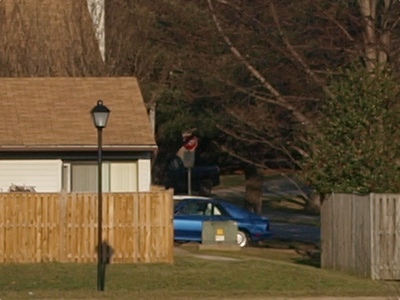
| |
| [5] 12-60 mm F/2.8-4.0 ZD at 19 mm, F/3.2 (fully open) [full frame] | ||
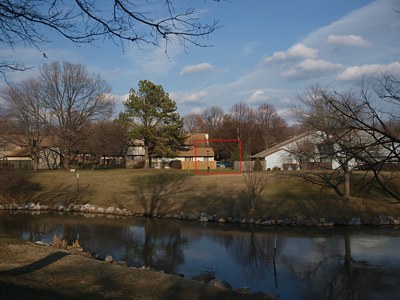
|
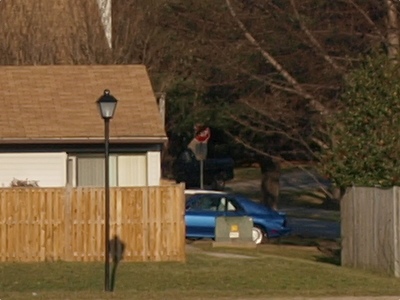
| |
| [6] 14-54 mm F/2.8-3.5 ZD at 19 mm, F/2.9 (fully open) [full frame] | ||
|
At this (very useful, therefore important!) focal length, the new zoom seems to have a more pronounced off-center advantage, although the chromatic aberration in the older one is almost gone. I'm skipping the corner crops, but you may compare the full frames (load each into a separate tab of a tabbed browser, and then quickly switch between the tabs). Interestingly, at F/8 (not shown here but also checked) both lenses are practically impossible to tell apart, even when pixel-peeping. Note that the magnification seems to differ between both samples. This does not mean that some millimeters may be longer than others: the focal length readout is rounded to the closest whole value; for the nominal 19 mm this may result in magnifications differing by 5%. The difference I measured between these samples is 4%, i.e., within that margin. I wish Olympus would show one more significant digit in the EXIF data (and showing the current focal length in the monitor would also be nice.) More focal lengths? Here you go... | ||
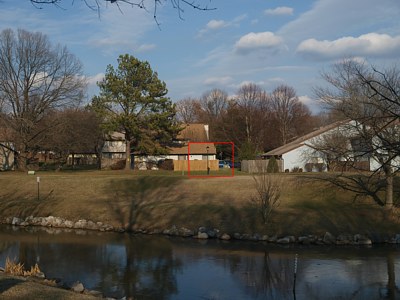
|
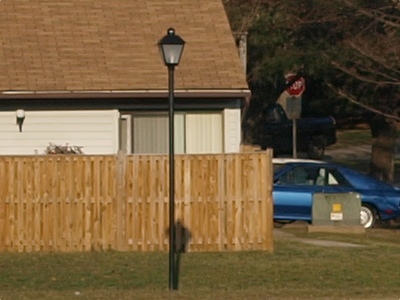
| |
| [7] 12-60 mm F/2.8-4.0 ZD at 24 mm, F/3.4 (fully open) [full frame] | ||
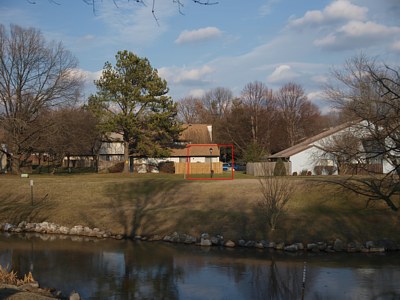
|
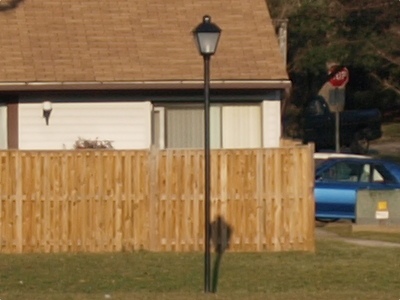
| |
| [8] 14-54 mm F/2.8-3.5 ZD at 25 mm, F/3.1 (fully open) [full frame] | ||
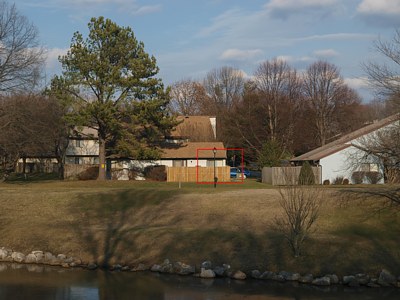
|
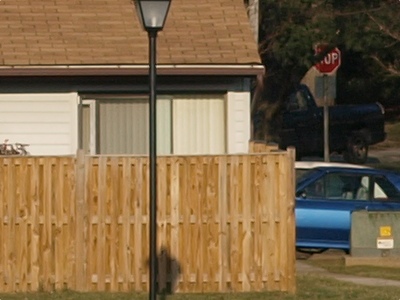
| |
| [9] 12-60 mm F/2.8-4.0 ZD at 35 mm, F/3.7 (fully open) | ||
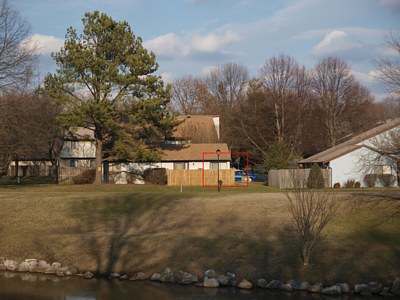
|

| |
| [10] 14-54 mm F/2.8-3.5 ZD at 35 mm, F/3.2 (fully open) | ||
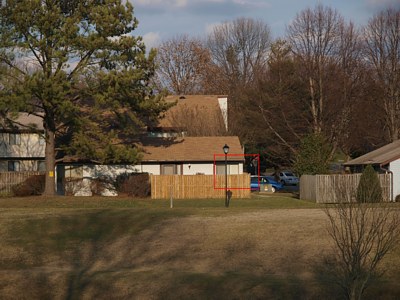
|
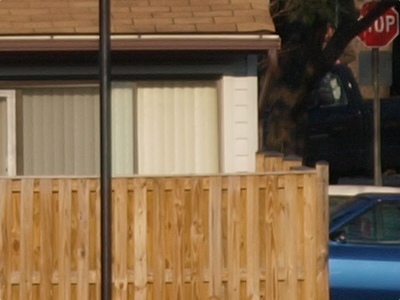
| |
| [11] 14-54 mm F/2.8-3.5 ZD at 54 mm, F/3.5 (fully open) [full frame] | ||
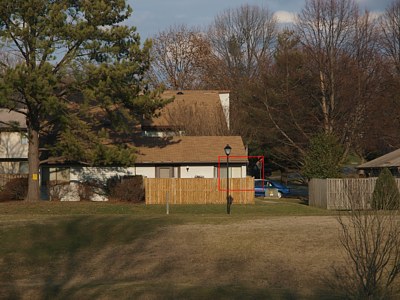
|
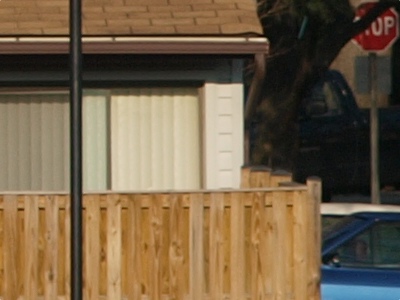
| |
| [12] 12-60 mm F/2.8-4.0 ZD at 35 mm, F/4.0 (fully open) [full frame] | ||
|
The same story of differences between both lenses is repeating itself in all these samples, except for the last pair, where the older zoom seems to have some advantage off-center over the new one. OK, so what was intended as a set of samples illustrating the performance of the E-3 ended up being also a comparison between two "standard" Olympus zooms, and this became quite interesting. That comparison, however, became possible only because of the impressive resolution of the imaging pipeline, with noise filtering turned off and sharpening tuned down. (At higher sharpening the differences would be less visible, because enhanced contour sharpness can easily be perceived as resolution.) By the way, I could see a similar pattern on the E-510, where detail rendition seems to be at par with that of the E-3, but not on the E-500, with noise filtering (non-defeatable) obliterating most of the differences. I suspect (although I haven't checked) that the differences would be also hardly visible on the E-1. All in all, this first set of samples made me already very impressed with the camera, although even more impressive is that the less expensive E-510, when equipped with the same lenses, can deliver the same resolution (as I can tell), and almost the same tonality. | ||
|
My dirty license plate This is another of my traditional sample subjects. This time all images were taken with the 121-60 mm ZD zoom, aperture priority (matrix metering), compensation of -0.3 EV, manual WB at :"sunny" (5300°K), ISO 100, Sharpness and contrast were at N-1, noise filtering off. All samples shown in this section were taken at maximum aperture; while I also shot ones at F/8, they behave predictably, so showing them would be a waste of space and time. | ||
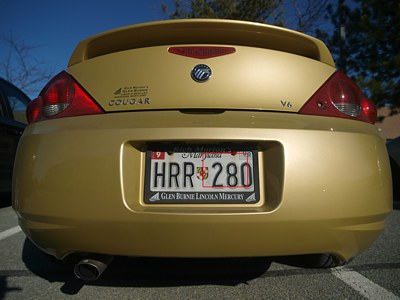
|
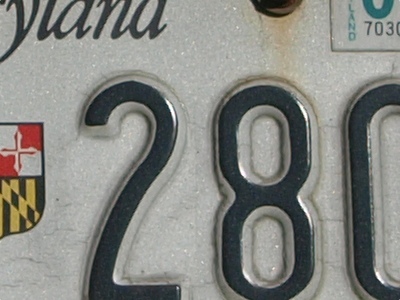
| |
| [13] 12-60 mm F/2.8-4.0 ZD at 12 mm, F/2.8 (fully open) [full frame] | ||
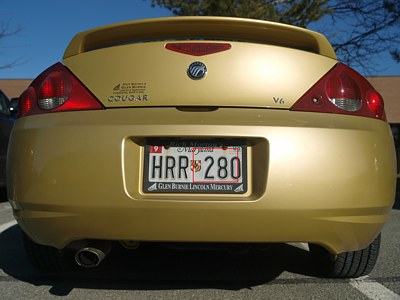
|
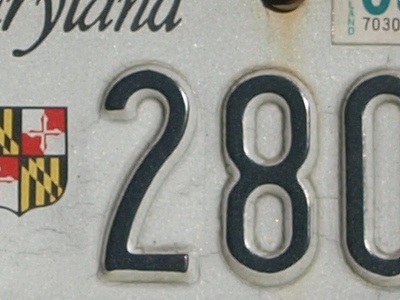
| |
| [14] 12-60 mm F/2.8-4.0 ZD at 19 mm, F/3.2 (fully open) | ||

|
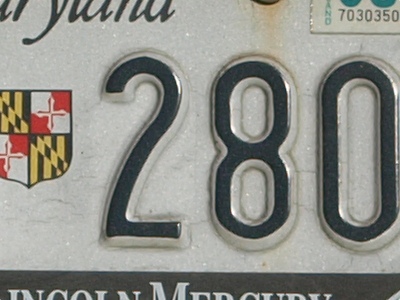
| |
| [15] 12-60 mm F/2.8-4.0 ZD at 24 mm, F/3.4 (fully open) | ||
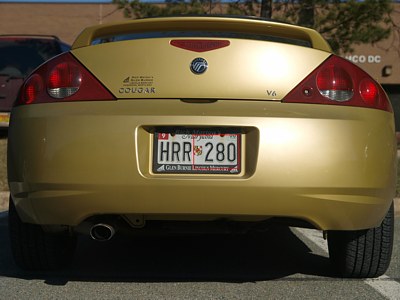
|
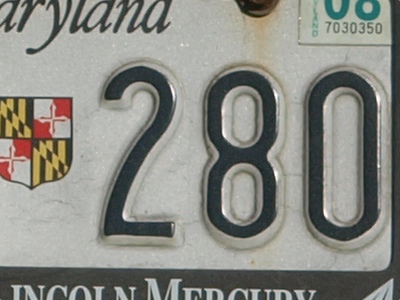
| |
| [16] 12-60 mm F/2.8-4.0 ZD at 35 mm, F/3.7 (fully open) | ||
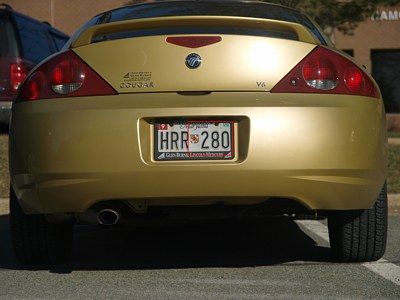
|
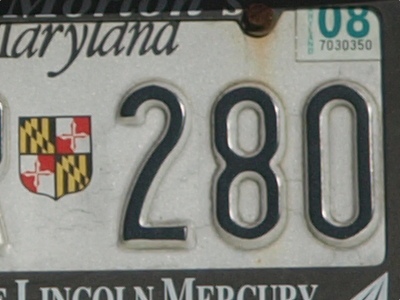
| |
| [17] 12-60 mm F/2.8-4.0 ZD at 49 mm, F/4.0 (fully open) | ||
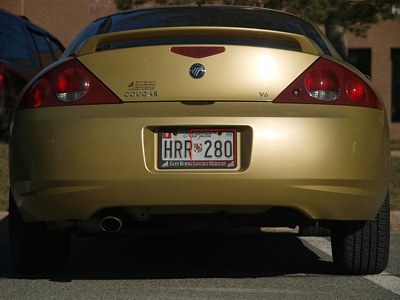
|
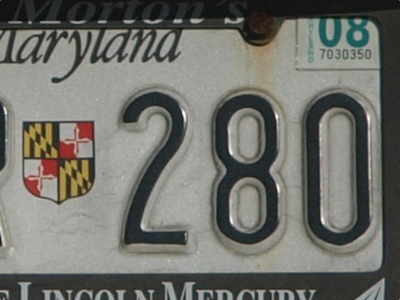
| |
| [18] 12-60 mm F/2.8-4.0 ZD at 60 mm, F/4.0 (fully open) [full frame] | ||
|
What can I say? The same as before, no surprises. Autofocus and exposure right on the spot (my usual -1/3 EV compensation works best for me in the latter case), and the lens delivers. The picture at F=49 mm seems a bit less contrasty (not less sharp!) than the rest. A fluke? Maybe, but samples at F/8 show the same pattern. Perhaps the lens has a bit lower contrast at this focal length? | ||
|
High ISOs ISO settings, especially higher ones, should be studied together with noise filtering and image sharpening; there may be an interplay of all three factors. For the time being, however, here are just a few samples illustrating the camera's performance at high sensor gain values. The pictures were taken about 5:30 PM late January in Maryland; I guess, just after the sunset, with the parking shaded off the brighter part of the sky by buildings. At ISO 100 this situation would have required an exposure of about 1/2 s at F/4, too long to be handheld, even with image stabilization. Therefore I started from ISO 400 (1/8 s), going up to ISO 3200 (1/60 s), with the IS system activated. Please note that some camera shake can be present in these handheld pictures, although I shot two or three copies of each, selecting the one which was sharpest at given ISO. Sharpness and contrast were at N-1, WB at "sunny", noise filtering off (at all ISOs). An exposure compensation (aperture priority) of -2/3 EV was applied — after all, the scene was and felt dim. The 12-60 mm zoom was at 30 mm. | ||
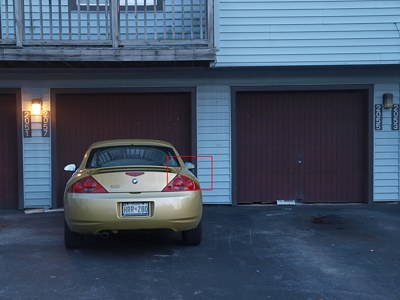
|
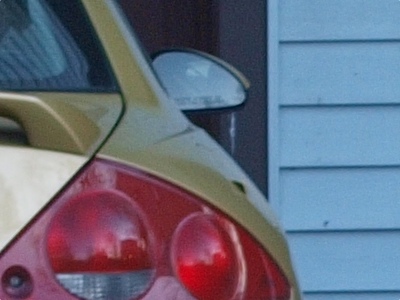
| |
| [19] ISO 400, 1/8 s | ||
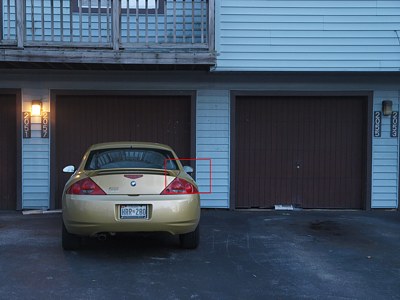
|
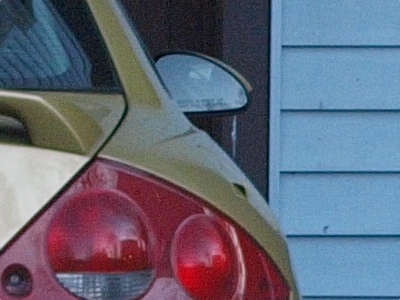
| |
| [20] ISO 800, 1/15 s | ||
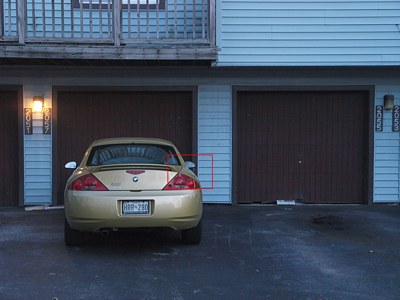
|
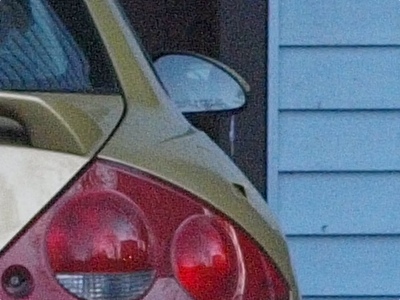
| |
| [21] ISO 1600, 1/30 s | ||
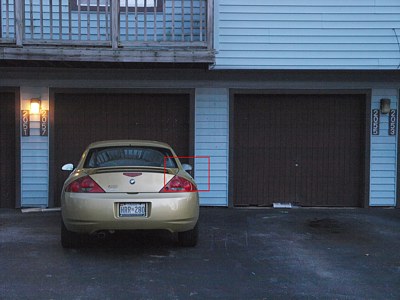
|
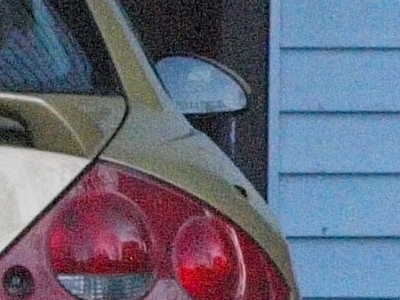
| |
| [22] ISO 3200, 1/60 s | ||
|
From where I stand, ISO 400 is pretty and smooth (but so it was already in the E-510); using any noise filtering here would be a waste (still, see a separate article on that). ISO 800 is also quite nice, so I wouldn't be afraid to use it (as long as the scene brightness range is not too large, but this is always true). Then ISO 1600 is a bit noisy, but usable if you need it, and ISO 3200 — for emergency use only. Even at highest settings the images are quite sharp — thanks to the noise filter being in the Off position. Note that color and contrast hold well, except for ISO 3200 which has a slight yellowish shift (even more visible in my other samples at that speed, all of them). Still, looking at the 1:1 sample now from the "right" distance of about one meter, I started suspecting that it could (just could!) work with some external noise removal. Let me quickly check... | ||
|
...and here you go! Less than two minutes later (clocked!), with help of the Neat Image plugin in Photo-Paint we have arrived to an almost-passable, if a bit plasticky, version; better than I hoped for. Compare this with the sample directly above. An inspection of the full frame will show that there are still some artifacts left, including noise clusters, color patches, and banding. Still, this seems better than what I'm getting with the built-in noise filter, but I have to try both ways on the same frame to be more definite on that. |
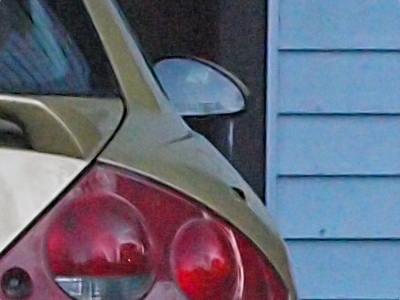
Sample [22] at ISO 3200 after noise removal with Neat Image | |
|
OK, so ISO 3200 in the E-3 may be not just for emergencies — if you use a noise removal application in postprocessing, but still, this is not something I would use on a regular basis. More E-3 samples For writing this series of articles I shot almost 3000 images with that camera. Some of them are presented in other pages at this site. Here they are:
| ||

|
My other articles related to the |
|
Evolt® and Olympus® are registered trademarks of Olympus Corporation.
This page is not sponsored or endorsed by Olympus (or anyone else) and presents solely the views of the author. |
| Home: wrotniak.net | Search this site | Change font size |
| Posted 2008/01/31; last updated 08/06/29 | Copyright © 2008 by J. Andrzej Wrotniak |